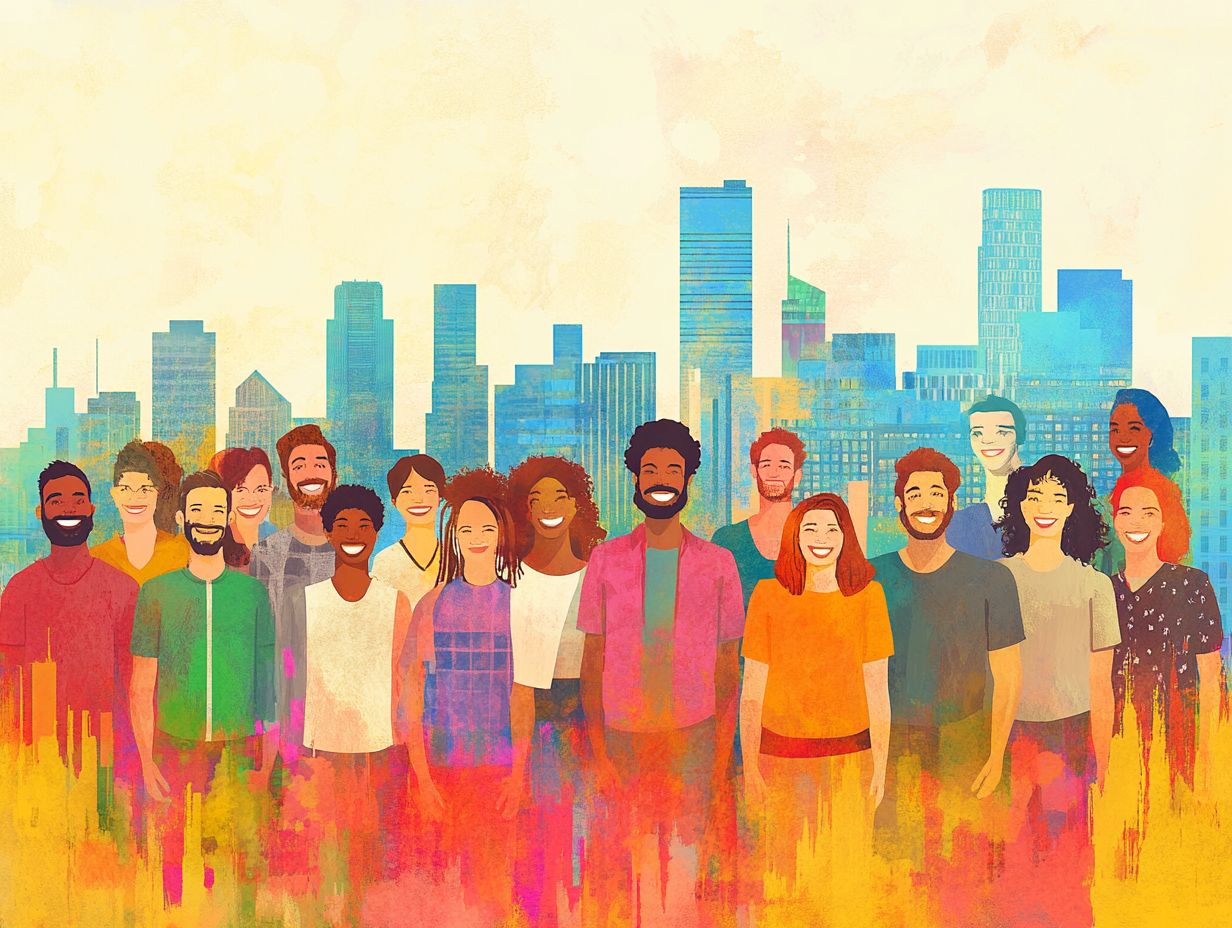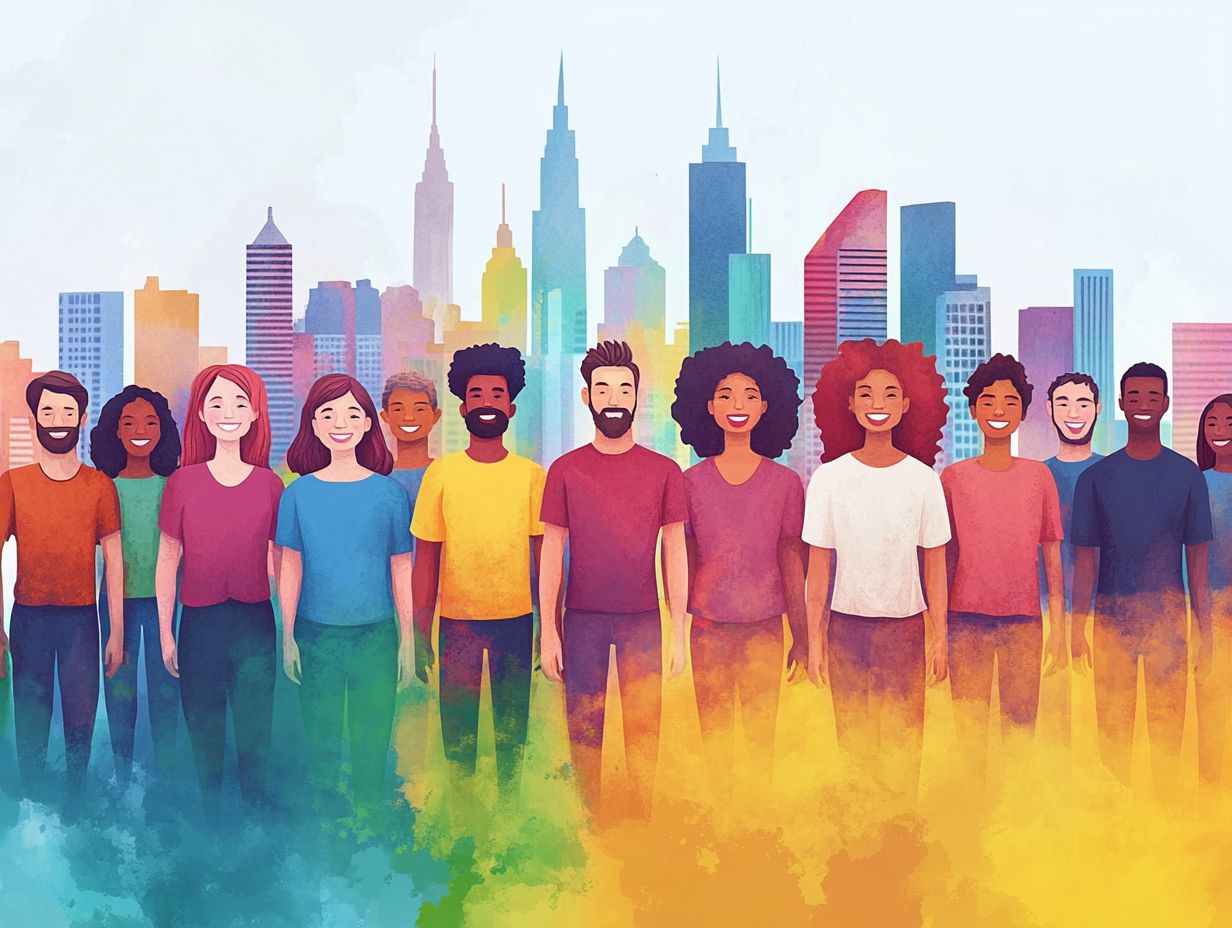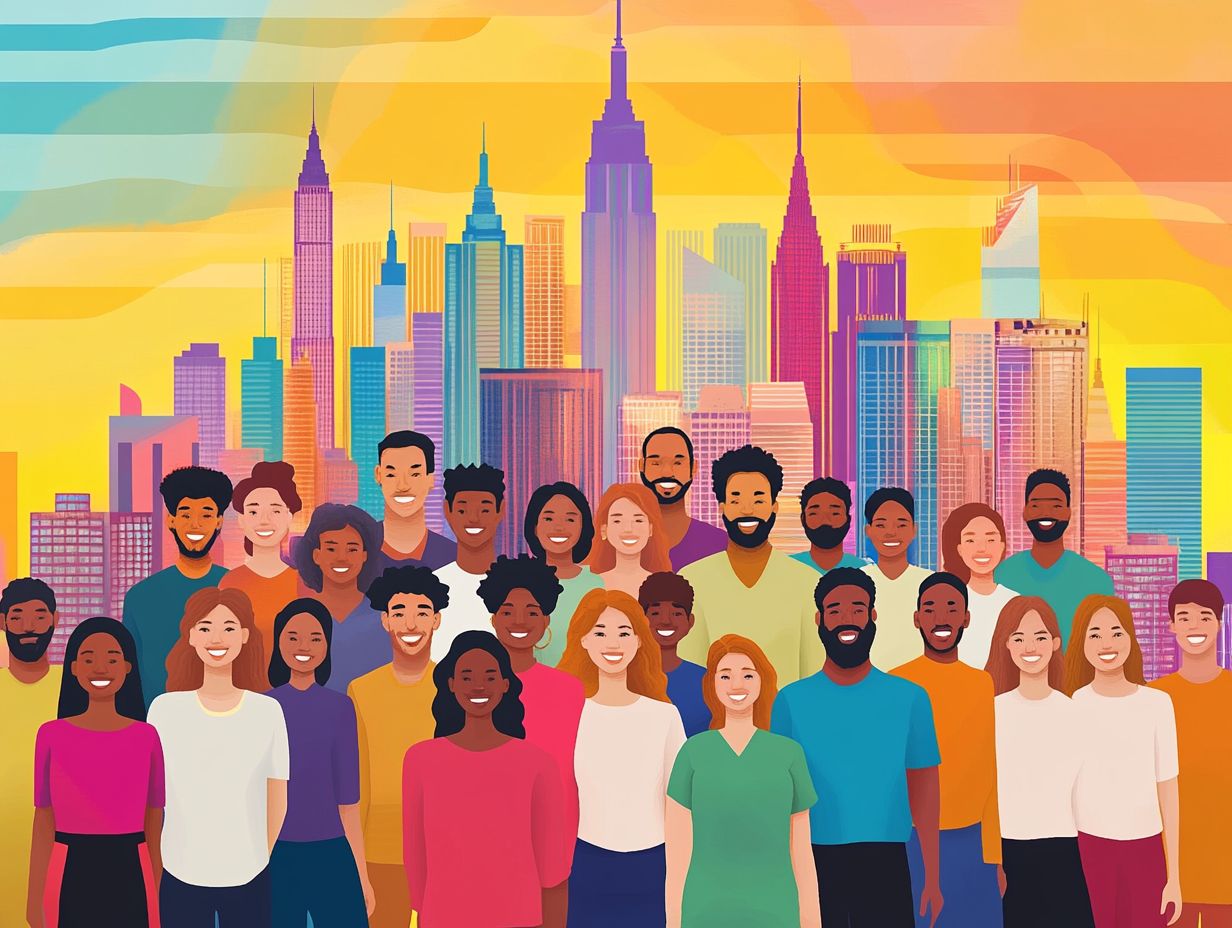Gender equality is not merely a social issue; it is a fundamental human right that affects everyone and shapes societies and economies alike.
This discussion delves into the essence of gender equality, tracing its historical journey and examining the contemporary landscape, which is characterized by both significant achievements and ongoing challenges.
By understanding the key factors that influence gender dynamics and reviewing proactive measures taken through advocacy and policy, we will uncover the essential steps needed to bridge the gender gap and create a more equitable future.
Join us as we navigate this critical topic and explore how each of us can contribute to meaningful change.
Understanding Gender Equality

Gender equality refers to the fair treatment of women, men, boys, and girls based on their respective needs. It does not imply that men and women will become identical. Instead, equality signifies equal rights, responsibilities, and opportunities for all individuals, regardless of gender, race, ethnicity, religion, sexual orientation, age, disability, or other characteristics.
Gender equality is often confused with gender equity. While gender equity pertains to fairness and justice in the distribution of benefits and responsibilities between women and men, gender equality is a result of gender equity, not the reverse. Sometimes referred to as gender parity, gender equality is frequently discussed within the context of women’s rights and enablement. However, it is crucial to recognize that gender equality encompasses equal rights and opportunities for everyone, irrespective of gender.
The significance of gender equality lies in its status as a fundamental human right, offering positive benefits to individuals and society as a whole. Achieving gender equality and women’s enablement is essential for sustainable development and is often considered a key indicator of a society’s level of progress and development. It is vital to foster a society where all individuals have the opportunity to realize their full potential.
Additionally, gender equality is a social justice issue and a moral imperative, ensuring that all individuals enjoy the same rights and opportunities, regardless of gender. It is frequently examined through the lens of feminism, which advocates for women’s rights and gender equality.
To understand gender equality, one must recognize the gendered cultural norms and roles that dictate appropriate behavior for women and men. These roles significantly influence the opportunities available to individuals and contribute to a cycle of inequality. Gender equality is also intricately linked to issues of race, class, and identity, creating unique challenges and barriers for different groups that must be addressed in efforts to promote gender equality.
Comprehending gender equality necessitates an awareness of the challenges and barriers individuals of different genders face, which can range from access to education and healthcare to economic opportunities and political representation. It also involves recognizing the unique experiences and challenges, including violence, discrimination, and societal expectations, that different genders encounter.
Ultimately, understanding gender equality is critical for fostering inclusivity and enablement. It is essential for creating a just, equitable, and sustainable society where all individuals can reach their full potential.
Defining Gender Equality
Gender equality refers to the equal rights, responsibilities, and opportunities of individuals, regardless of their gender. Its main objective is to eliminate gender stereotypes and restrictive roles, which often hinder progress.
Gender equality is essential not only for establishing a fair and just society but also for promoting economic growth and social development. When individuals are provided with equal opportunities to thrive, free from the constraints of traditional gender roles, countries can benefit from a more diverse workforce and innovative ideas.
For instance, according to the World Economic Forum, closing the global gender gap in labor force participation could contribute approximately $28 trillion to global GDP by 2025. Dismantling these stereotypes enables both men and women to pursue careers and roles that align with their aspirations rather than those dictated by societal norms.
In countries with higher gender equity, such as the Nordic nations, there is a positive correlation with levels of happiness and well-being, further highlighting the importance of achieving true gender equality.
Why it Matters
Gender equality is essential as it serves as a core component of social justice, women’s rights, and economic enablement, benefiting society as a whole. By promoting gender equality, we can eliminate injustices that hinder progress.
Women’s equal participation in the economy and politics leads to improved decision-making processes and outcomes, as it incorporates a diverse range of perspectives and strengthens democratic governance.
The Equal Rights Coalition is a group of states and governments dedicated to promoting equality and non-discrimination based on sexual orientation and gender identity. This coalition includes 41 core countries, regional organizations, and observers from the Americas, Europe, Africa, the Middle East, and the Asia-Pacific region.
Furthermore, the 2030 Agenda for Sustainable Development recognizes gender equality as one of the 17 Sustainable Development Goals (SDGs). It is not only a goal in itself but also a significant contributor to overall societal progress in areas such as poverty eradication, inclusive economic growth, education and healthcare, and environmental sustainability.
The History of Gender Equality

The history of gender equality encompasses significant milestones and events that have shaped the women’s rights movement over the centuries. These milestones illustrate the evolving societal attitudes toward women’s rights and highlight the ongoing struggle against gender discrimination and inequality.
Major Milestones and Events
Significant milestones and events in the history of gender equality include several key developments. The suffrage movement, which fought for women’s voting rights, marked a crucial turning point. Landmark legislation for women’s rights, such as marital property laws, reproductive rights, equal pay laws, and anti-discrimination ordinances, has also played a vital role.
Additionally, global gatherings and conferences focused on social justice and gender equality, such as the United Nations’ World Conferences on Women, have been instrumental in advocating for change. Social movements advocating for women’s rights and gender equality, including the #MeToo movement, the women’s liberation movement, and LGBTQ+ rights movements, have further advanced the cause.
The significance of these events and milestones lies in their contributions to the advancement of women’s rights and larger societal change. For instance, the passage of the Equal Pay Act in 1963 was a major step towards eliminating wage disparities based on sex, bringing attention to the economic dimensions of gender inequality.
The establishment of International Women’s Day by the United Nations in 1977 provided a global platform for advocating women’s rights and recognizing their achievements, fostering ongoing dialogue about gender issues. In the 21st century, the #MeToo movement has exposed persistent gender injustices and mobilized individuals to demand accountability and equity across various sectors, reshaping the modern landscape of gender activism.
The Current State of Gender Equality
The current state of gender equality reflects both the progress made over the years and the ongoing challenges that hinder true gender equity. It also underscores the complex nature of gender discrimination and inequality across various sectors.
Progress and Challenges

Significant progress has been made in achieving gender equality, particularly with the increase in women’s representation in leadership positions. However, serious issues such as the gender pay gap and gender-based violence continue to persist.
One notable area of progress is workplace equality, where more companies are proactively promoting gender diversity and implementing programs designed to create equitable work environments. In politics, there has been a rise in the number of women occupying seats in legislatures, which has led to more balanced decision-making that better reflects the needs of the population.
Despite these advancements, many challenges remain. The gender pay gap is closing at a glacial pace, with women often earning less than men for the same work. Additionally, the threat of gender-based violence continues to impact countless lives. Addressing these complexities will require a sustained commitment and innovative solutions from both the public and private sectors.
Factors Affecting Gender Equality
Social, cultural, and economic factors that shape perceptions and treatment of different genders often intensify gender discrimination and inequality.
Social, Cultural, and Economic Influences
Social, cultural, and economic influences significantly impact gender equality, often resulting in gender bias and the reinforcement of traditional gender roles that limit opportunities for marginalized genders. These influences manifest in various ways across different communities and sectors, shaping individual experiences and broader societal structures.
For instance, in education, marginalized genders face barriers to enrollment due to cultural norms that prioritize male education. A case study in rural India revealed that families tended to invest in their sons’ education, while daughters were often withdrawn from school upon reaching a marriageable age.
In the workforce, gender imbalances are particularly evident in sectors such as technology and engineering. A prominent example is the technology industry in Silicon Valley, where diversity initiatives aim to recruit women and non-binary individuals; however, women still comprise only 25% of the workforce and encounter systemic biases that hinder their advancement.
These specific real-world examples illustrate the complexities of the ingrained influences that affect the pursuit of gender equality.
Efforts towards Gender Equality

Gender equality is pursued through a variety of initiatives, including government policies, advocacy campaigns, and grassroots activism, all aimed at breaking down systemic barriers and promoting equality between genders.
Government Policies and Programs
Governments play a crucial role in promoting gender equality through various policies and programs, including policy reform, gender-sensitive budgeting, and legal frameworks designed to protect women’s rights and ensure gender parity in the labor force.
In Sweden, for instance, the government has implemented a comprehensive parental leave program that allows both mothers and fathers to take paid leave. This initiative helps equalize the responsibilities of child-rearing and challenges traditional gender roles in the workplace.
Such programs have significantly improved workplace equality, as demonstrated by the increase in women’s labor force participation from 67% in 1990 to 83% in 2021. Similarly, the Canadian government has enacted legislative protections for women’s reproductive rights, including access to abortion and contraception, which has been associated with a 7% decline in unintended pregnancies from 2015 to 2020.
The success of these policies serves as evidence of the effectiveness of proactive initiatives to promote gender equality and reflects broader societal shifts toward inclusivity.
Advocacy and Activism
Advocacy and activism are essential components of efforts to achieve gender equality, as they enable individuals and communities to confront gender discrimination and raise awareness of rights through local and international movements and campaigns.
Such initiatives inspire people to advocate for themselves and foster solidarity among various groups working toward social change. Activists have successfully utilized social media to engage broader audiences, sparking conversations that promote a deeper understanding and public empathy regarding gender issues.
Local advocacy efforts, such as community workshops and awareness programs, play a vital role in bridging gaps by equipping individuals with practical tools and strategies to actively participate in their communities. These forms of advocacy are crucial for shaping policies that prioritize gender equality on political and cultural agendas.
Closing the Gap
Achieving gender equality in law and decision-making, enableing women and girls, and securing gender justice while preventing violence necessitate focused efforts across multiple sectors. These initiatives require the involvement of both women and men, along with active community engagement, to ensure that gender justice is realized.
Steps for Achieving Gender Equality
Strategies to achieve gender equality include ensuring equal access to education, advocating for legislative changes, and creating safe spaces for discussion and support.
These approaches help prioritize gender equality and foster an inclusive environment that encourages open conversation. Educational institutions can contribute by incorporating gender studies into their curricula, raising awareness among young people and helping them develop an understanding of inclusivity from an early age.
Organizations can support this effort by implementing training programs to address unconscious bias, while governments can strengthen policies that promote equity in the workplace.
Through consistent public awareness campaigns, communities can create an environment in which everyone feels enableed to advocate for gender inclusiveness, thereby helping to close the gap toward equality.
The Role of Individuals and Society
The role of individuals and society is crucial in the fight for gender equality, as everyone can contribute to creating an inclusive environment through actions such as becoming male allies and engaging in community activism.
Individuals can actively challenge stereotypes by recognizing their own biases and those of others around them. They can also educate those in their vicinity and promote equitable practices in workplaces and schools by advocating for inclusive policies, supporting educational initiatives that enable all genders, and highlighting the benefits of gender equality in the workplace.
Societal norms, which are often deeply entrenched, can be transformed through public awareness campaigns and discussions that emphasize the importance of inclusion and diversity. Such campaigns can be initiated by civil societies, activist groups, or government agencies. These efforts may include creating inclusive policies in workplaces and schools, conducting widespread awareness campaigns in print and electronic media, and fostering community-level discussions and debates.
Collective community endeavors, such as community programs and collaborative projects, further strengthen this movement by encouraging participation from everyone, regardless of gender. Initiatives like mentorship programs and workshops aim not only to educate but also to inspire individuals to take concrete steps toward fostering a culture of equality. These initiatives are essential for ensuring a more just and balanced society for future generations.
